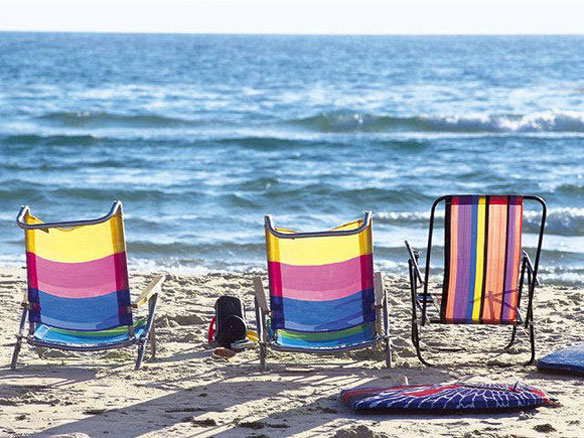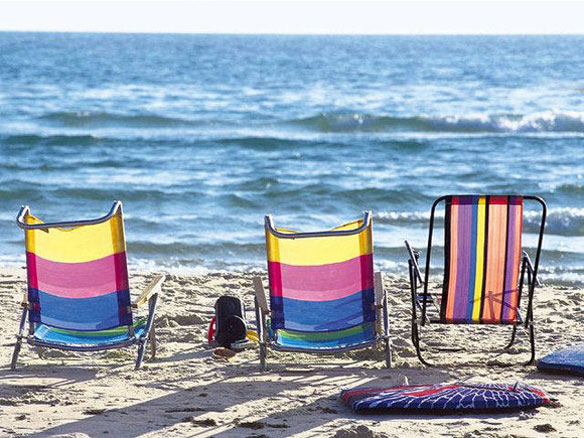
By Orrin H. Pilkey, Professor Emeritus of Earth Science at Duke University’s Nicholas School of the Environment.
It had to happen. As more and more buildings are built along the North Carolina shoreline and as shoreline-retreat catches up with these buildings (many of which are rentals), the pressure to bend the coastal regulations to save buildings becomes almost unbearable. But maintaining the shoreline status quo and protecting all buildings eventually means loss of our developed beaches. It also means we will be ill- prepared for sea-level rise.
Currently in North Carolina sea level is rising about 1.5 feet per century over a land slope that averages 1: 2000. This means a 1-foot rise could cause a shoreline retreat of more than a third of a mile (in theory). Already some of the erosion on our shoreline is due to sea-level rise, which explains why a spring high tide flooded N.C. 12 last year near Rodanthe.
Over the next 100 years, according to recent estimates by Professor Hal Wanless of the University of Miami, we should expect 5 to 6 feet of sea-level rise. This is close to the North Carolina sea-level rise panel’s maximum estimate of 4.6 feet over the same time frame. The Wanless projection is a bit more up-to-date because it considers a whole series of warming events related to disappearing sea ice in the Arctic Ocean that may contribute 1 foot of rise.
Projections of the rise by scientists and government agencies are always on a century basis, but our problems will arise much quicker than that. To put this into a practical context, a 2- to 3-foot rise, which may be reached as soon as 40 to 60 years from now, means the end of barrier island development.
Why? Erosion rates will be even faster than at present, and “nourished” beaches will no longer stay put. Our barrier islands will have to be surrounded in their entirety by seawalls to protect them from storm waves and inundation. At the same time funding for local beach communities is in doubt, because protecting major coastal cities and infrastructure will be a higher government priority.
Here in North Carolina, efforts to preserve our beaches climaxed when the Coastal Resources Commission ordered sandbags removed a couple of years ago. Sandbags are no different than concrete walls in terms of the erosion they cause to a beach (take a walk or drive along Seagull Drive on South Nags Head for an example). Shortly after the sandbag removal order was issued, however, a moratorium on it was declared, and was renewed this year.
At the same time the beachfront communities, especially exclusive Figure Eight island, began pushing for terminal groins (jetties) against the advice of the state’s marine geology and oceanography community.
Terminal groins and sandbags aren’t the only problems. The proposed new Oregon Inlet bridge assures that the state will face long and costly decades of holding an island in place solely to protect a single road. High-rises continue to be built on various barrier islands, effectively preventing any sort of flexible response to the rising sea.
Now is not the time to drop the ball. Global change is already upon us.
North Carolina needs to preserve the regulations that have served us well for decades. This includes removal of sandbags as regulations require. We need to go further and prohibit all high-rises on any barrier island. And when the time comes, we must accept that buildings that can no longer be protected through reasonable means must be demolished or moved back.
If we don’t do these things we eventually will be Florida-ized. That state has hundreds of miles of shorefront lined with high-rises protected by beach-destroying seawalls. This type of shortsighted barrier island development has a dismal future 40 years from now.
North Carolina’s coastal management program needs more backbone now than ever before. Gov. Beverly Perdue is about to appoint new members of the CRC. If the new appointees maintain the status quo and continue to protect all beachfront development, the state’s beaches will continue their downward plunge. Perdue should take the long view.
Op Ed, The Rising Sea, Orrin Pilkey and Rob Young
By Orrin H. Pilkey, Professor Emeritus of Earth Science at Duke University’s Nicholas School of the Environment.
Tuesday, August 25, 2009
What little serious attention that has been paid to the rising sea level in North Carolina has mainly focused on the beaches and barrier islands and the threat to beachfront Mcmansions. But sea level rise is a major threat to the lands behind the barrier islands, to the towns and villages scattered about and especially to the states agricultural industry.
In our new book, The Rising Sea, we suggest that coastal areas can expect a minimum of 3 feet of sea level rise by the year 2100. This is made all the more significant because the average slope of the land in the lower coastal plain of North Carolina is 1 to 2000 meaning that a sea level rise of 1 foot will move the shoreline back 2000 feet. The slope of the mainland behind Pamlico and Albermarle Sounds however is typically 1 to 10,000 and even less, meaning that a 1 foot rise will flood more than 2 miles inland.
A number of small towns along the sounds and estuaries will be impacted. If you can see a marsh from your town you may be in trouble. Some like Plymouth, Washington and Columbia are entirely at low elevations and could be completely inundated by a 3 foot rise. Dozens of other small towns and even Wilmington will soon find their storm drainage systems and sewage plants in need of replacement.
But mainland flooding is only part of the problem. Storm surges from future Hurricanes and northeasters as well as spring tides will intrude ever further into the mainland as seas rise. Salt water intrusion will occur both into the groundwater and up the rivers and streams and render much agricultural land completely useless. River floods will increase in magnitude as the rising sea level provides a higher base level at the river mouth. As sea level inches up, the efficiency of drainage from many farmers fields will decrease and water logging will be prolonged. As the ground water table moves up the roots of certain tree species will be flooded and large scale killing of forests will occur even before salinization. Already too many trees are dying from this cause along estuarine shorelines in NC.
Shoreline erosion along estuarine shorelines will increase and since restrictions on shoreline stabilization on such shorelines are effectively non-existant in NC. Sea walls will sprout leading eventually to widespread loss of salt marshes.
All of these things are already happening on a small scale in our lower coastal plain. Salt water is extending ever further up rivers, salt water is intruding ion some areas and fields are draining more poorly than a decade ago.
There aren’t many things that can be done to mitigate the serious damage that will be caused to agriculture in North Carolina’s lower coastal plain. Perhaps the most likely to succeed at least temporarily would be changing to crops that are more resistant to a higher water table. A more costly and also temporary approach would be to increase the efficiency of field drainage by excavating new ditches and even installing pumps. Levee construction is already being carried out for a number of small towns (such as Swan Quarter) but this most likely wont work for agricultural areas. Installing gates at river or inlet mouths in Dutch-like fashion is clearly out of the question because of the huge costs involved. Its important to remember when North Carolina farmers are in trouble so will also be the farmers all along the East Coast and Gulf coast coastal plain from New Jersey to Texas. Considering that the cities such as New York, Boston and Philadelphisa will be in trouble it is likely that government help to solve the problem will not be impressively large.
North Carolina has instituted a new sea level rise panel to examine the impact of sea level rise. We hope the fate of thousands of beach cottages wont overshadow the future of North Carolina lower coastal plain farmers. They are important too.









